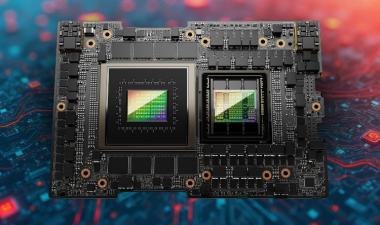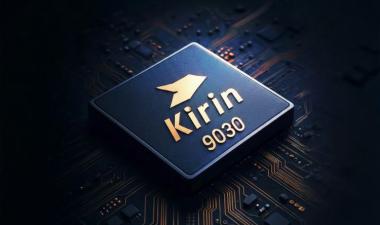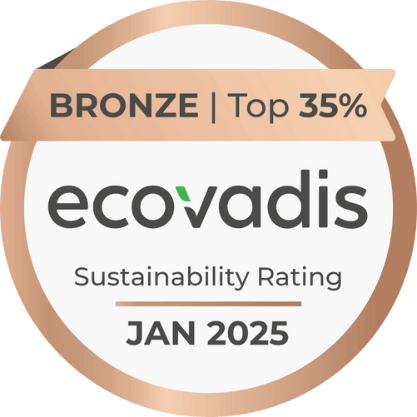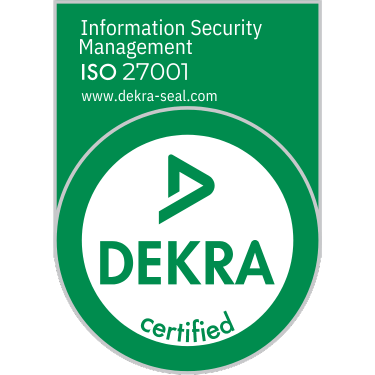Glossary of Key Terms Related to Semiconductor Sustainability and Green Tech
The combination of semiconductor manufacturing and supply chains, and a focus on sustainability and operational efficiency has given rise to a slew of new terms and concepts that sustainability practitioners will frequently encounter in reports, industry presentations, and expert analysis. The following are definitions of some of the most frequently used terms related to semiconductor sustainability.


Top 10 Terms
Carbon Footprint: A measure of the amount of carbon dioxide and other carbon compounds emitted due to the consumption of fossil fuels by a particular product, person, etc. Typically reported in carbon dioxide or carbon equivalents (CO2e).
Circular Economy: An economic system aimed at eliminating waste and the continual use of resources, emphasizing reuse, repair, and recycling
Energy Efficiency: Using less energy to provide the same level of energy service, reducing energy consumption and associated environmental impacts
Green Tech: Technology designed to minimize environmental impact, including renewable energy, energy efficiency, and pollution reduction technologies
Life Cycle Assessment (LCA): The combined emissions from the sourcing, production, use, and end-of-life of a product. In this case an electronic product (e.g., mobile phone, electric vehicle, server, etc.).
Scope 1 Emissions: Direct greenhouse gas (GHG) emissions that occur from sources that are controlled or owned by a fab (for example, emissions associated with wafer fabrication such as process chemicals used, fuel combustion for pumps, power, etc.)
Scope 2 Emissions: Indirect greenhouse gas (GHG) emissions associated with the purchase of electricity, steam, heating, and cooling
Scope 3 Emissions: Greenhouse gas (GHG) emissions associated with activities not owned or controlled by the fab, such as emissions generated by the sourcing of raw materials required by the fab
Ultrapure Water (UPW): Very highly purified water with extremely low levels of contaminants. Essential for semiconductor manufacturing
Water Footprint: The total volume of freshwater used to produce the goods and services consumed by an individual or community.
Definitions for Additional Sustainability Terms Used in the Semiconductor Industry
Abatement: Actions taken to reduce or eliminate emissions or pollution
Biodegradable: Capable of being decomposed by bacteria or other living organisms
Bioplastics: Plastics derived from renewable biomass sources, such as vegetable fats and oils, corn starch, or microbiota
Carbon Accounting: Also known as greenhouse gas (GHG) accounting. It is the process of measuring and tracking the amount of greenhouse gases that a facility or process emits. Essentially, it's about quantifying a "carbon footprint."
Carbon Capture and Storage (CCS): The process of capturing carbon dioxide emissions from industrial sources and storing them underground
Carbon Intensity: The amount of carbon emissions per unit of output or energy
Carbon Neutrality: Achieving a balance between carbon emissions and carbon removal, often through carbon offsets
Carbon Offsetting: Compensating for carbon emissions by funding an equivalent carbon dioxide saving elsewhere
Chemically Amplified Resists (CARs): Photoresists used in photolithography that are highly sensitive to light
Chiplet Technology: A modular approach to chip design, where integrated circuits (ICs) are constructed from smaller, interconnected components (chiplets)
Closed-Loop Recycling: Recycling a product into the same product, reducing the need for virgin materials
Cradle-to-Grave Analysis: Also known as life cycle assessment (LCA), the combined emissions from the sourcing, production, use, and end-of-life of a product.
Data Center Efficiency: Optimizing energy consumption and cooling in data centers to reduce environmental impact
Eco-design: Designing products and services with environmental considerations in mind from the outset
Environmental Justice: The fair treatment and meaningful involvement of all people regardless of race, color, national origin, or income with respect to the development, implementation, and enforcement of environmental laws, regulations, and policies
Environmental Regulations: Rules and laws designed to protect the environment
ESG (Environmental, Social, and Governance): A set of standards for a company’s operations that socially conscious investors use to screen potential investments
EUV Lithography: Extreme ultraviolet lithography (EUV) is an advanced technology used in the semiconductor industry for manufacturing leading-edge integrated circuits (7nm-3nm logic and 1α and 1β DRAM)
E-waste (Electronic Waste): Discarded electrical or electronic devices and components
Green Building: Designing, constructing, and operating buildings in an environmentally sustainable way
Greenwashing: The practice of making unsubstantiated or misleading claims about the environmental benefits of a product, service, or company
High Bandwidth Memory (HBM): A high-performance computer memory technology used in conjunction with high-performance graphics processing units and network devices
High-NA EUV Lithography: A next-generation EUV technology for chip manufacturing that enables higher resolution and smaller transistors.
Industrial Ecology: The study of industrial systems and their interactions with the environment
Impact Assessment: Evaluating the potential environmental and social impacts of a project or policy
Manufacturing Carbon Module: A tool used to calculate the carbon emissions produced during semiconductor manufacturing
Multi-Chip Module (MCM): An electronic assembly in which multiple integrated circuits (ICs) and other discrete components are integrated, usually onto a unifying substrate
Net-Zero Emissions: Achieving a balance between emissions produced and emissions removed from the atmosphere
Operational Efficiency: The ratio of useful output to total input in any process. In the case of sustainability, the optimization of processes to reduce waste and energy consumption
PFAS (Per- and Polyfluoroalkyl Substances): A group of man-made chemicals that are persistent in the environment and have potential adverse health effects
Photolithography: A process used in semiconductor manufacturing to transfer a pattern onto a silicon wafer using light
Process Node: a designation used to indicate the technology generation of a process
Product Carbon Footprint (PCF): Also known as Emissions Carbon Footprint (ECF), this is the sum of emissions across four key lifecycle stages of the product namely -- manufacturing, transportation, use, and end-of-llfe.
Reclamation: The process of returning land or resources to a usable state
Renewable Energy: Energy derived from natural processes that are replenished at a higher rate than they are consumed, such as solar, wind, and hydropower
Resource Depletion: The consumption of non-renewable resources faster than they can be replenished
Silicon Intensity: The amount of silicon used in semiconductor devices, impacting resource consumption and emissions
Supply Chain Transparency: Providing clear and accessible information about the environmental and social impacts of a company's supply chain
Sustainable Development Goals (SDGs): A collection of 17 interlinked global goals designed to be a "blueprint to achieve a better and more sustainable future for all"
Sustainable Investing: Investing in companies and projects that have a positive environmental and social impact
Sustainable Materials: Materials that have a lower environmental impact throughout their life cycle
Sustainable Packaging: Packaging designed to minimize environmental impact, often using recycled or biodegradable materials
Water Recycling: Treating and reusing wastewater for beneficial purposes
Expanded Glossary
Top 100 frequently used terms related to semiconductor sustainability, organized by areas of focus
1. Carbon Footprint: Total GHG emissions (CO2e)
2. Scope 1 Emissions: Direct emissions
3. Scope 2 Emissions: Indirect emissions from purchased energy
4. Scope 3 Emissions: Indirect emissions from value chain
5. Life Cycle Assessment (LCA): Full environmental impact analysis
6. Green Tech: Environmentally friendly technology
7. Circular Economy: Waste reduction through reuse and recycling
8. Energy Efficiency: Using less energy for the same output
9. Water Footprint: Total freshwater usage
10. Ultrapure Water (UPW): Highly purified water for fabs
11. PFAS: Persistent, harmful chemicals
12. Sustainable Packaging: Eco-friendly packaging
13. Renewable Energy: Replenishable energy sources
14. Carbon Neutrality: Balancing emissions with removal
15. ESG (Environmental, Social, Governance): Sustainability standards
16. Chiplet Technology: Modular chip design
17. Multi-Chip Module (MCM): Integrated circuit assemblies
18. High-NA EUV Lithography: Advanced wafer printing, a process currently in R&D
19. Manufacturing Carbon Module: Emissions calculation tool
20. Operational Efficiency: Optimizing processes for sustainability
21. E-waste: Electronic waste
22. Carbon Offsetting: Funding emissions reduction elsewhere
23. Sustainable Development Goals (SDGs): Global sustainability targets
24. Cradle-to-Grave Analysis: Full product lifecycle impact
25. Water Recycling: Reusing treated wastewater
26. Photolithography: Wafer patterning process
27. Chemically Amplified Resists (CARs): Light-sensitive materials
28. High Bandwidth Memory (HBM): High-performance memory
29. Silicon Intensity: Silicon usage in devices
30. Data Center Efficiency: Optimizing data center energy use
31. Process Node: Semiconductor manufacturing technology
32. Abatement: Emissions reduction actions
33. Carbon Intensity: Emissions per unit of output
34. Eco-design: Environmentally conscious product design
35. Reclamation: Restoring land or resources
36. Bioplastics: Plastics from renewable sources
37. Closed-Loop Recycling: Recycling into the same product
38. Supply Chain Transparency: Disclosure of supply chain impacts
39. Net-Zero Emissions: Balancing emissions with removal
40. Green Building: Sustainable construction
41. Sustainable Materials: Low-impact materials
42. Industrial Ecology: Studying industrial system interactions
43. Environmental Justice: Fair environmental treatment
44. Biodegradable: Decomposable by organisms
45. Carbon Capture and Storage (CCS): Capturing and storing CO2
46. Sustainable Investing: Investing in eco-friendly companies
47. Environmental Regulations: Protection laws
48. Impact Assessment: Evaluating project impacts
49. Resource Depletion: Over-consumption of resources
50. Greenwashing: Misleading environmental claims
51. Rare Earth Elements (REEs): Elements used in electronics
52. Extended Producer Responsibility (EPR): Producer's end-of-life responsibility
53. Hazardous Waste: Dangerous waste materials
54. Remanufacturing: Restoring products to like-new condition
55. Green Chemistry: Designing environmentally safe chemicals
56. Water Stewardship: Responsible water management
57. Eco-labeling: Certifying environmentally friendly products
58. Sustainable Consumption: Reducing consumption impacts
59. Biodiversity: Variety of life forms
60. Climate Resilience: Adapting to climate change impacts
61. Wafer Fabrication (Fab): Chip manufacturing facility
62. Die: Individual chip unit
63. Advanced Packaging: Interconnecting chips in complex ways
64. System-on-Chip (SoC): Integrated chip systems
65. Fan-Out Wafer Level Packaging (FOWLP): Advanced packaging technique
66. Through-Silicon Vias (TSVs): Vertical connections in chips
67. EUV Lithography: Extreme ultraviolet lithography
68. Gate-All-Around (GAA) FETs): Advanced transistor structure
69. Backside Power Delivery Networks (BSPD): Efficient power distribution
70. 3D NAND: Vertical memory chip stacking
71. DRAM: Dynamic random-access memory
72. Foundry: Semiconductor manufacturing service
73. Integrated Device Manufacturer (IDM): Company that designs and manufactures chips
74. Photoresist: Light-sensitive material in lithography
75. Metrology: Measurement and inspection
76. Epitaxy: Growing crystalline layers
77. Selective Etching: Removing specific materials
78. FinFET: Fin field-effect transistor
79. Reticle: Master template for wafer printing
80. Silicon Interposer: Substrate for chip interconnection
81. Corporate Sustainability Reporting Directive (CSRD): EU reporting standards
82. Task Force on Climate-related Financial Disclosures (TCFD): Climate risk reporting
83. Global Reporting Initiative (GRI): Sustainability reporting standards
84. Science Based Targets initiative (SBTi): Emissions reduction targets
85. Carbon Accounting: Measuring and reporting emissions
86. Decarbonization: Reducing carbon emissions
87. Sustainable Innovation: Developing eco-friendly technologies
88. Green Supply Chain: Environmentally responsible supply chain
89. Life Cycle Costing (LCC): Evaluating full product costs
90. Environmental Management System (EMS): Framework for managing environmental impacts
91. Stakeholder Engagement: Involving interested parties
92. Product Stewardship: Responsibility for product impacts
93. Climate Risk Assessment: Evaluating climate change risks
94. Regenerative Agriculture: Farming practices that restore ecosystems
95. Industrial Symbiosis: Resource sharing between industries
96. Smart Grids: Modernized electricity networks
97. Vehicle-to-Grid (V2G): Electric vehicle energy sharing
98. Distributed Energy Resources (DERs): Localized energy sources
99. Predictive Maintenance: Using data to prevent equipment failures
100. Digital Twin: Virtual representation of physical assets for optimization
Partner with TechInsights for Sustainable Semiconductor Intelligence
TechInsights is the trusted partner of the top companies worldwide, providing the knowledge needed to drive sustainable innovation in the semiconductor industry.









